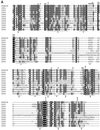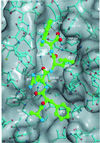Lysosomal cysteine proteases: facts and opportunities
- PMID: 11532926
- PMCID: PMC125585
- DOI: 10.1093/emboj/20.17.4629
Lysosomal cysteine proteases: facts and opportunities
Abstract
From their discovery in the first half of the 20th century, lysosomal cysteine proteases have come a long way: from being the enzymes non-selectively degrading proteins in lysosomes to being those responsible for a number of important cellular processes. Some of the features and roles of their structures, specificity, regulation and physiology are discussed.
Figures



References
-
- Barrett A.J., Rawlings,N.D. and Woessner,J.F.,Jr (eds) (1998) Handbook of Proteolytic Enzymes. Academic Press, London, UK.
-
- Brocklehurst K. (1994) A sound basis for pH-dependent kinetic studies on enzymes. Protein Eng., 7, 291–299. - PubMed
-
- Brömme D., Li,Z., Barnes,M. and Mehler,E. (1999) Human cathepsin V functional expression, tissue distribution, electrostatic surface potential, enzymatic characterization and chromosomal localization. Biochemistry, 38, 2377–2385. - PubMed
-
- Chapman H.A., Riese,R.J. and Shi,G.-P. (1997) Emerging roles for cysteine proteases in human biology. Annu. Rev. Physiol., 59, 63–88. - PubMed
Publication types
MeSH terms
Substances
LinkOut - more resources
Full Text Sources
Other Literature Sources

